Choosing a Universal Travel Plug or Power Adapter
I’m old enough to remember a time when international plug adapters were for the odd hairstyling device or very bulky laptop, and cell phones were left behind on international trips. But the average traveler nowadays carries more expensive electronics with them than ever before. And the charging cords for those devices may not be compatible with different types of international electrical sockets, OR with higher electric currents in Europe and beyond.
Travel power adapters are no longer a question of just plugging in a hairdryer. You need to be able to safely charge multiple devices while traveling– everything from your iPhone, to electric toothbrush, to Kindle. Not sure how to make that happen? We’re here to help!
If you’re wondering about varying electrical currents, take a look at our FAQs to see if your device requires a voltage adapter or just a plug adapter. If you know that your device is dual voltage, and only needs a travel plug adapter, scroll down to take a gander at our favorite travel plug adapters:
Best Travel Plug Adapters Quick Comparison Chart
| Adapter Name | Voltage Conversion? | Universal Adapter? | USB Plug? | Compact? |
|---|---|---|---|---|
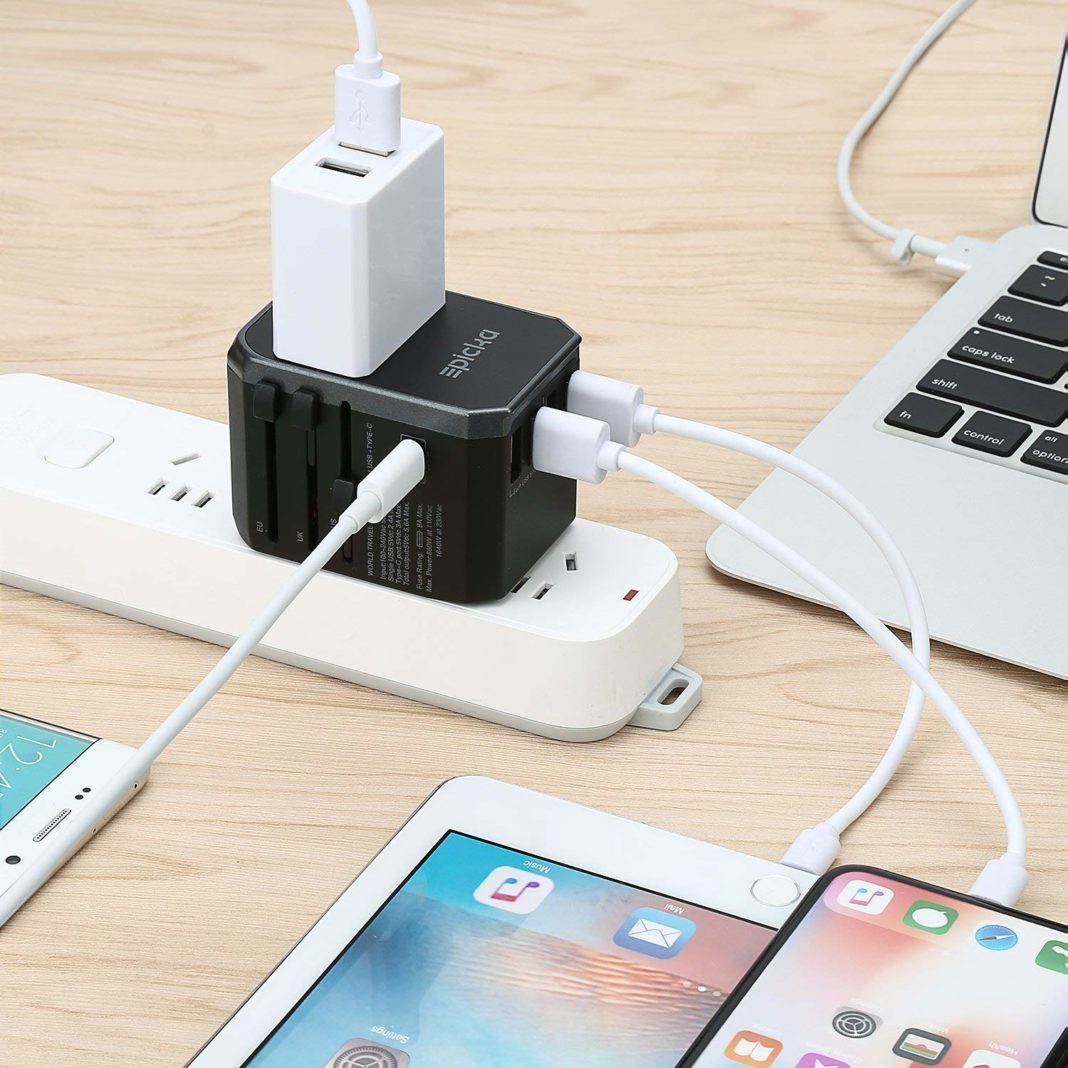 EPICKA Universal Adapter | No | Yes | Yes | Yes |
 Insten Universal Adapter | No | Yes | No | Yes |
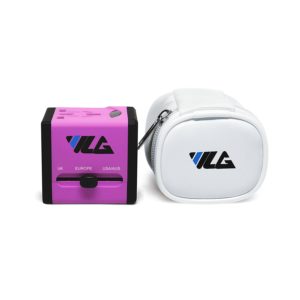 VLG Travel Adapter | No | Yes | Yes | Yes |
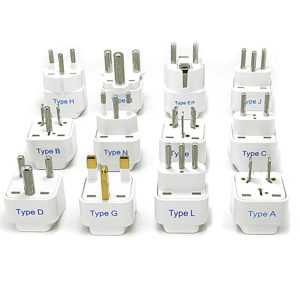 Ceptics 12 Piece Plug Adapter Set | No | Yes | No | Yes (but not if you travel with the entire set) |
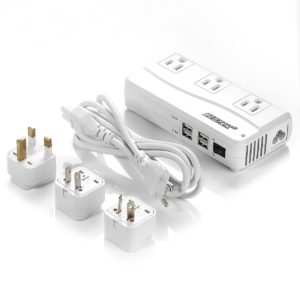 Bestek Voltage Converter & Power Adapter | Yes | Yes (with interchangeable plugs) | Yes | No |
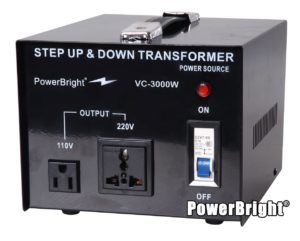 Power Bright Voltage Transformer | Yes | No | No | No |
| Adapter Name | Voltage Conversion? | Universal Adapter? | USB Plug? | Compact? |
Travel Plug Adapters – Reviews
1. EPICKA Universal Travel Adapter

Editor’s Choice
EPICKA’s Universal Travel Adapter has all the features you need in a travel plug adapter (including a USB-C port) and is well made yet affordable.
Features:
- Pop out plug adapters that work in 150+ countries, including much of Europe (US, UK, EU & AU/CN plug prongs)
- 1 plug outlet that accommodates US, as well as a variety of other plugs
- Choice of 2 or 4 USB ports
- Carrying case
- Does not convert voltage — but most adapters don’t. Read on for a couple voltage conversion options, along with a guide to help you determine if you need a voltage converter.
More on these features:
The combination of features and affordable price make this awesome adapter the editor’s choice!
The pop-out adapter prongs have you covered for the US, United Kingdom, Australia, Canada, and most of Europe, but be sure to check compatibility if you’re traveling to South Africa and other less common tourist destinations (a full list of compatible countries is available in the Amazon listing). USB ports also make for easy charging of your phone and iPad–and the USB-C port is a godsend for those of us with Android devices.
If you’re traveling solo, or mainly need to charge small electronics, one adapter should more than cover your needs. My boyfriend and I both travel with laptops that can’t be plugged in via USB, so we pack an adapter each so that we’re not fighting over the only plug.
2. Insten Universal Adapter

Great Value
Insten’s power adapter is a great value priced option with basic features.
Features:
- Pop out plug adapters that work in 150+ countries (US, UK, EU & AU/CN plug prongs)
- 1 plug outlet that accommodates US, as well as a variety of other plugs
- Value priced
- No warranty
- No USB charger
- Does not convert voltage — but most adapters don’t. Read on for a couple voltage conversion options, along with a guide to help you determine if you need a voltage converter.
More on these features:
Like the previous adapter, the Insten is an international plug adapter with flip-out prongs that will work for the US, United Kingdom, Australia, Canada, and most of Europe. It has one plug outlet, but doesn’t include USB outlets–which isn’t a problem for everyone. The Insten is a nice basic adapter that travelers love. We love the compact size; it’s so easy to toss in your suitcase or backpack and go!
3. VLG Universal Travel Adapter

Compact Size
VLG’s travel adapter is another highly rated option available in a rainbow of hues. It’s compact size and carry case make it a favorite.
Features:
- Pop out plug adapters that work in 150+ countries (US, UK, EU & CN/AU plug prongs)
- 1 plug outlet that accommodates US, as well as a variety of other plugs
- Dual USB ports
- Carrying Case
- Does not convert voltage — but most adapters don’t. Read on for a couple voltage conversion options, along with a guide to help you determine if you need a voltage converter.
More on these features:
This stylish power adapter is one of the more attractive options, and offers all of the features more expensive adapters do, minus the warranty.
The flip-out international travel adapter prongs will work for the US, United Kingdom, Australia, Canada, and most of Europe. The handy USB outlets are present, as well as the multi-country plug outlet.
In addition, you get a handy carrying case to keep the unit clean and safe when not in use–we wish more manufacturers would do this!
4. Ceptics 12 Piece Plug Adapter Set

Great for the World Explorer
f you’re going off the beaten tourist path and need a less common plug adapter, Ceptics 12 piece set likely has the plug type you need. It’s best for travelers who require a larger variety of plugs.
Features:
- 12 separate plug adapters
- Covers more countries than standard universal adapters
- Universal outlet
- Lifetime warranty
- Sturdy construction
- Does not convert voltage — but most adapters don’t. Read on for a couple voltage conversion options, along with a guide to help you determine if you need a voltage converter.
More on these features:
Ceptic’s adapter set may not be the most compact choice, but as long as you’re not planning a trip around the world, you can pack only the adapter(s) you’ll need, taking up very little space in your luggage.
The 12 power adapters cover the most countries of any adapter on this list, making this product a true worldwide travel adapter set. They also say the outlet end will accept plugs from “almost every country, EXCEPT large South African plug.” This means that if you pick up a device in France, and want to use it in Australia, the adapter will accept that plug prong type, as well as working with your standard US plug prongs.
The downside with individual adapters like this is that you’ll need one for each item you want to charge. Unlike many universal adapters, which feature multiple USB inputs, these accept just one pronged plug at a time. If this is an issue for you, take a look at Ceptics Grounded Adapter set. It features the same wide variety of plug adapters, but with a larger port that charges two pronged, and two USB devices concurrently.
We love how well constructed these feel, and the lifetime warranty makes these a great buy. They’re best truly universal plug adapter option in their class.
Travel Voltage Converters – Reviews
1. Bestek Voltage Converter & Travel Adapter

Converts Plug AND Voltage
Bestek’s voltage converter power strip is a favorite of pros and regular travelers alike.
This is a good choice if your electronic devices are not dual voltage, or you just want to be extra careful with valuable electronics.
If, however, you plan to use a NON-dual voltage hair dryer, flat iron, etc, this converter probably won’t work. See number 7 below for a voltage converter that will handle those devices.
Features:
- Interchangeable plug adapters that work in 150 countries (US, UK, EU & AU plug prongs)
- Step-down voltage conversion from 220 volts to 110 volts
- 3 Plug outlets
- 4 USB ports
- 18 month warranty
- Not safe to use with high wattage devices like hair dryers
More on these features:
With worldwide plug adapters, plenty of outlets, and voltage conversion for low wattage devices, Bestek’s all-in-one converter strip has almost all the features you could ask for.
You should, however, ask yourself if you really need voltage conversion. Many of the devices that this is safe to use with (smartphones, laptops, etc), are dual voltage and only require a plug adapter.
Be sure to look at the labeling and confirm that your device is dual voltage! If it isn’t, or you just want to take extra precautions, Bestek’s voltage converter will protect your devices.
If you’re looking for something smaller (and cheaper), and can do with just one plug outlet, Bestek also makes a more compact version.
2. Power Bright Voltage Transformer

Heavy Duty Voltage Converter
If you’ve done some searching on Amazon, you’ve probably seen voltage converters that promise to work with your high wattage, single voltage items like hairdryers or flat irons.
Here’s the thing: those converters aren’t really lowering the voltage, so much as chopping the high voltage into smaller segments. So they’re unreliable, and just as likely to fry your devices as safely power them. Reviews for items like this Conair voltage converter are full of people complaining it destroyed their pricey hair styling tools.
So that leaves us needing a more powerful converter like the Power Bright. When choosing a voltage converter, you should pick one that is 3 times the wattage of your device, to be safe (so if your hairdryer is 1,000 watts, you want a 3,000 watt converter).
Features:
- Will convert voltage up or down– up to 3,000 watt voltage
- Universal outlet
- Fuse protected
- Will safely power high wattage devices like hair dryers
- Expensive, bulky and impractical for travel
- You’ll need to purchase plug adapters separately
- One year warranty
Quality converters like the Power Bright will safely power your high wattage devices, but at a cost. They’re great for people who’ve moved from one country to another and brought their TV and flat iron with them. They’ll use the transformer every day in their homes, making it a worthwhile investment. For the rest of us, it’s a bulky, expensive solution.
We recommend saving yourself the trouble, and purchasing a dual voltage hairdryer for $20 or so. There’s plenty to choose from on Amazon (and dual voltage flat irons as well), so you won’t have to worry about frying your expensive hair styling tools while traveling.
FAQs About Travel Power Adapters:
Where you’re going, and how widely you travel will inform your choice of power adapter. You should also be aware of voltage differences from country to country. Some of your electronic devices may be dual voltage, but it’s always wise to double check, so you don’t fry your electronics in a country with higher voltage. Read more about voltage and plug adapters versus voltage converters at the bottom of this article.
1. Voltage conversion – may be necessary if your device is not dual voltage. Dual voltage devices will have a label that says something like “100/240V.” Devices like hairdryers, flat irons, etc., are generally NOT dual voltage.
2. Universal Plug Adapter – these all-in-on devices have a variety of plug prongs that can be configured to fit most international outlets. Even with universal adapters, be sure to check that the adapter will work in the country you’ll be traveling to, as very few are truly worldwide travel adapters (for example, universal plug adapters often don’t include some South African countries, and other less touristy destinations).
3. USB plug – some adapters have a handy USB plug in addition to the regular plug receptacle, so you can leave the plug portion of your phone or iPad charger at home, and charge multiple devices at the same time.
4. Compact Size – You don’t want a power adapter to take up much space in your luggage. Voltage converters are large by necessity, but it’s not difficult to find a wall plug adapter that will fit in the palm of your hand. You may also find that you want multiple plug adapters for all your devices, so large adapters can quickly take up valuable luggage space.
A travel plug adapter simply adapts your plug fit the different shapes of international outlets, whereas voltage converters actually control the voltage flowing into your device. 
Plug types A and B are found in the USA, Japan, Taiwan, South and Central America, and the Caribbean, but you’ll need an adapter to fit an A or B plug into any of the other outlet types. 
Because voltage standards vary around the world, you may sometimes need both a plug adapter and voltage converter: 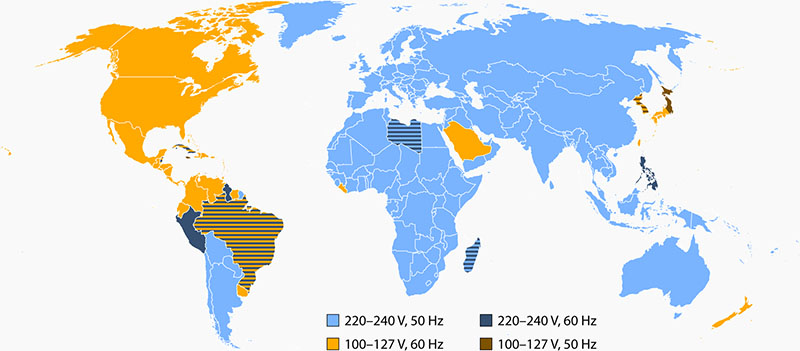
The yellow shaded areas of the voltage map are 100-127 volts, but you can see that much of the rest of the world, including Europe, Africa, and Australia, is shaded blue for 220-240 voltage. If you’re from a yellow shaded country, AND your device isn’t dual voltage (see more info below), you’ll need a voltage converter to avoid frying your electronics. Check the map for exceptions like Canada and Japan, but frequent travel will eventually land you in a country with higher voltage.
A very detailed breakdown of plug types and voltage by country is available on Wikipedia, and see the bottom of this article for more info on plug types and corresponding countries.
It’s important to be sure that the device you want to use when traveling is dual voltage. If it is, you should be fine with only a plug adapter, but if not you’ll need to purchase a voltage converter — or alternately think about leaving the device at home.
To check, look at the label on your device:
The label on a dual voltage device should read something like “100/240V.” This means that it will operate off of a voltage range from 100- 240 volts. The US operates on a 120 volt standard, while Europe, Australia and Africa use mainly 220-240 voltage, so it’s important to check that your device won’t get fried in these countries.
The label below is from an air purifier (don’t take this on vacation with you, it won’t fit in your suitcase anyway), but you can see that the voltage is listed as only “120V A.C.” It would require a voltage converter to function in a country with 240 voltage. 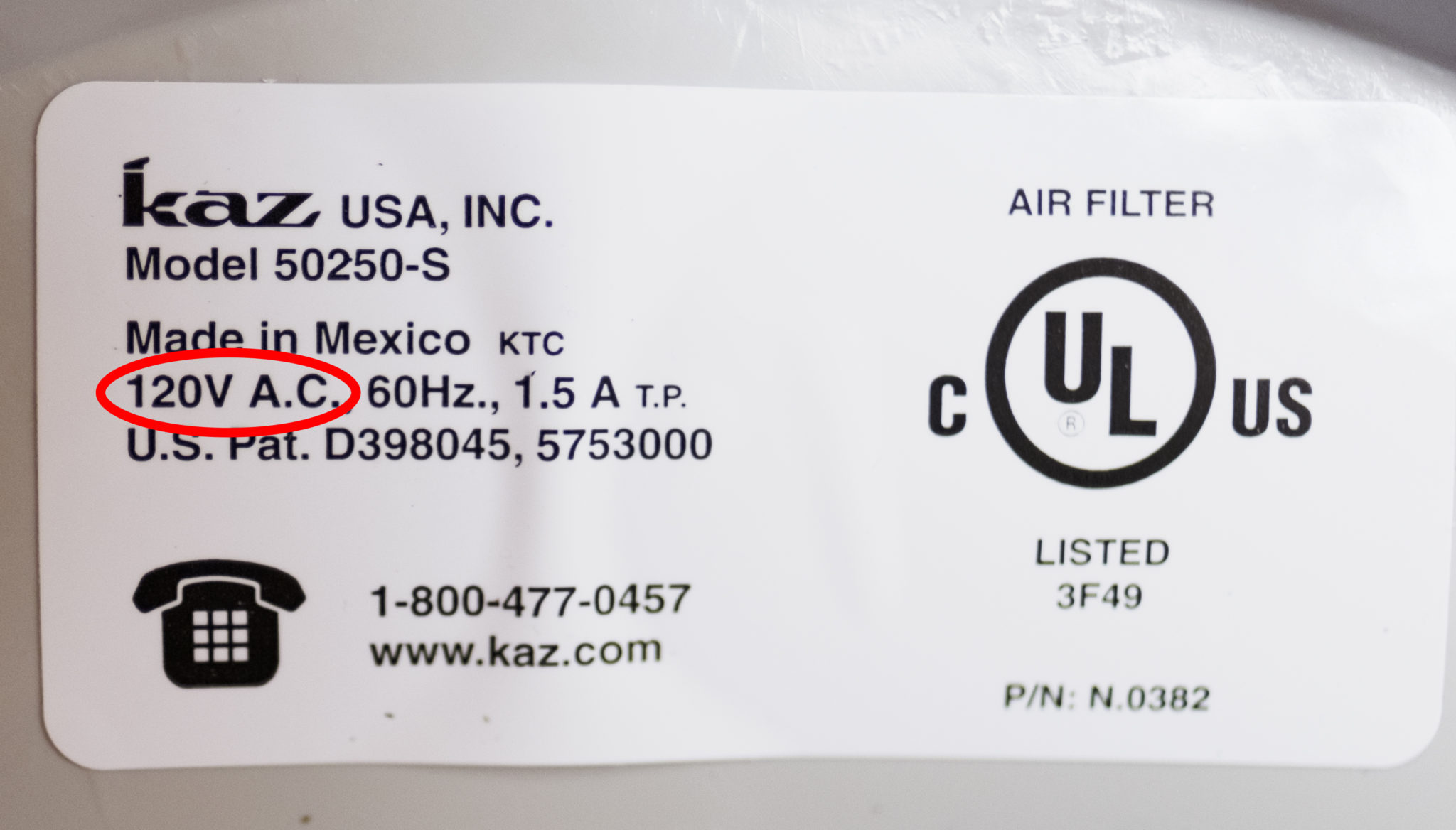
The labeling on your hair styling devices may be embossed into the plastic, and more difficult to read, but it’s there if you search for it.
Here’s the labeling from a battery charger for a camera, enlarged so you can see the details on the embossed plastic. It’s marked 100-240 volt, which is the magic phrase we want to see– you wouldn’t need a converter to use it abroad. 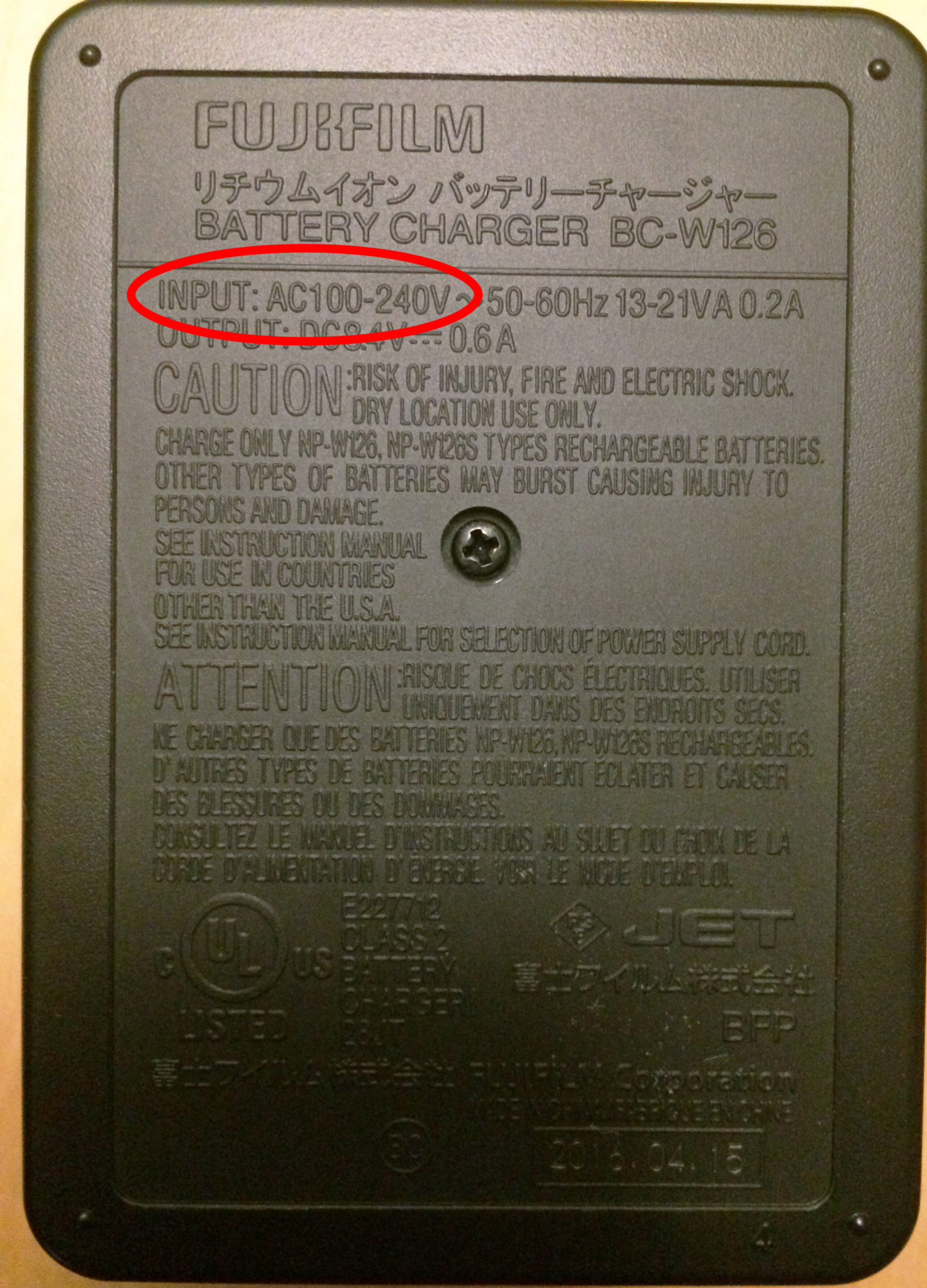
Most modern smartphones, tablets and laptops are dual voltage.
Smartphones and tablets can generally be charged with just the USB cord and international plug adapter, but you will of course need your laptop’s full cord with adapter brick. We checked with Apple to confirm that both the iPhone itself and the charging bricklet are dual voltage–but if you want to be extra careful, you can eschew the USB ports on travel plug adapters, and use the power bricklet in the normal plug outlet portion of your adapter instead.
Many travel size hairdryers, curling irons and flat irons are dual voltage, as are the chargers for high end electric toothbrushes. However, in our experience, many of these toothbrushes hold a charge for upwards of a week, so you should consider leaving your charger at home if you’re traveling for 10 days or less.
If you’re unsure, check the labeling, original packaging, or contact the manufacturer. You can always choose to play it safe by bringing along a voltage converter in addition to plug adapter.
Pin it: How to Choose a Travel Plug or Power Adapter
Enjoyed this article? Pin the Best Travel Adapters graphic below to save it for your next trip!
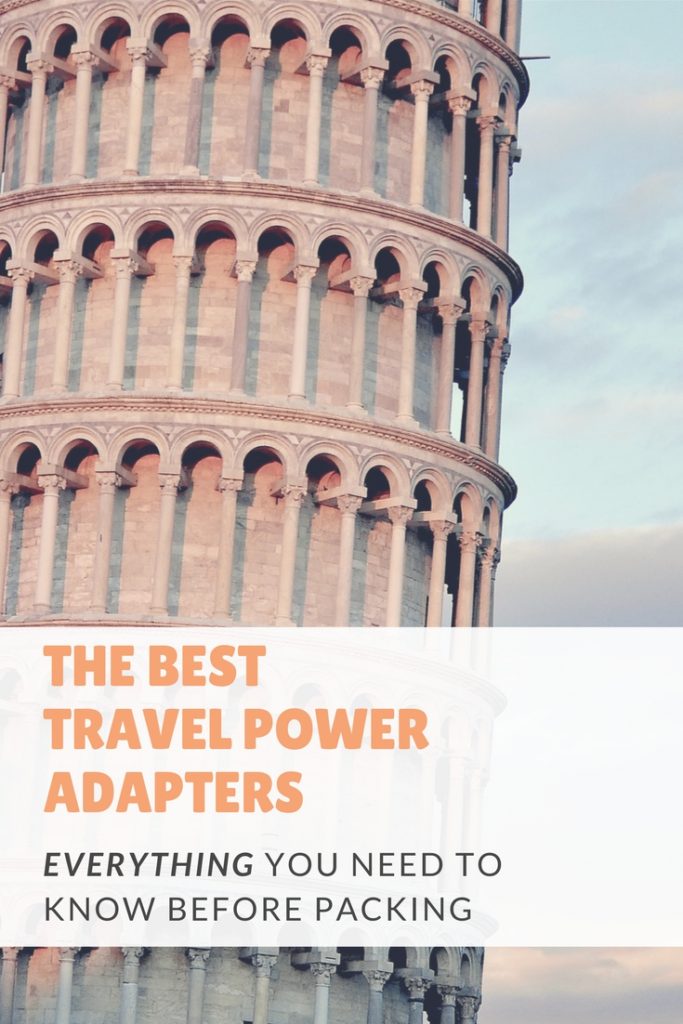
Guide to International Plug Types
Need some more help? Here’s photos and info for all 14 major plug types, along with the countries they’re used in. We hope this will be of help in choosing the best travel plug adapter for your needs.
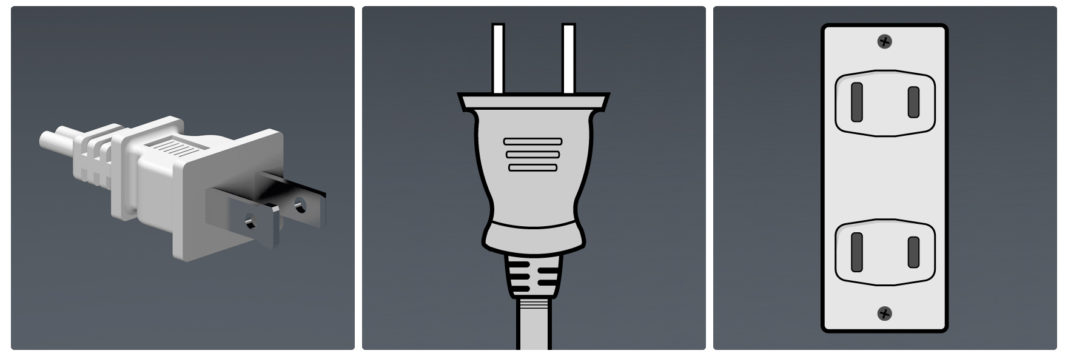
Plug Type A
If you’re from the USA, Canada, Japan, or Central America, you should be familiar with Plug Type A! It’s an ungrounded plug with two flat, parallel prongs. While the American version of this plug features a shorter and slightly taller prong, Japanese Type A prongs are of equal height. This means that many Japanese devices will work in American sockets, but not necessarily vice-versa.
Because Choosy Traveler is located in the US–and we wrote this with a North American audience in mind, all of the travel adapters on this list will work with Type A plugs — though many can accommodate other plug types as well.
Rather than take up a huge amount of space listing all of the countries that use each plug type, we’re linking to this Wikipedia page with all the info.
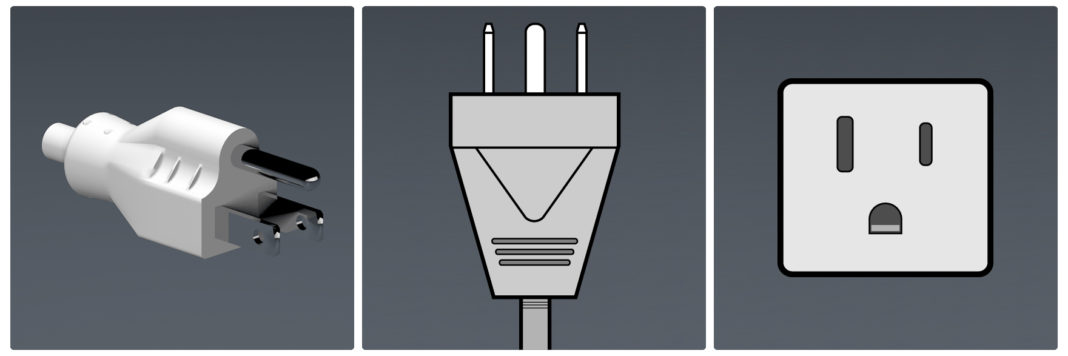
Plug Type B
Type B is essentially Type A with a round grounding prong. As with Type A, the uneven prong heights may not fit in Japanese outlets.
Most of the travel power and plug adapters on this list will work with Type B plugs. However, please double check that the adapter accepts a grounding prong.
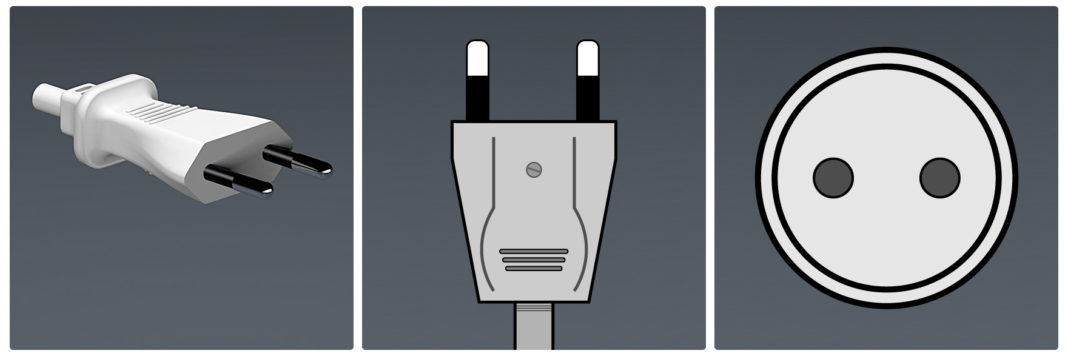
Plug Type C
Type C plugs are used in much of Europe, excluding the UK, Ireland, Cyprus, and Malta. The plugs have two round prongs that fit into multiple European outlets. While Type C plugs continue to be made, Type C outlets are being phased out, as the Type C prongs work with E, F, J, K or N outlets.
Because it’s such a common plug, you’ll find that all of the travel plug adapters on this list include a Type C adapter.
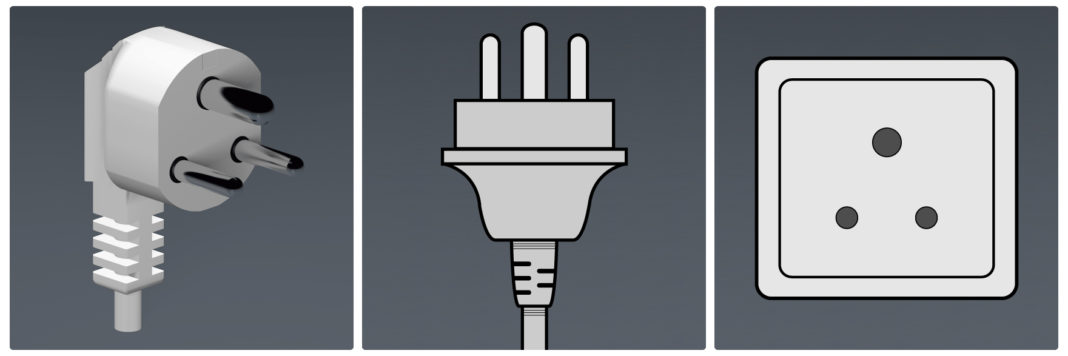
Plug Type D
Plug Type D is used India, Hong Kong, Sri Lanka, Nepal, and other parts of the Middle East and Africa. It has three three large round prongs. Because a number of countries that use Type D also use Type M plugs for large appliances, you may find that some outlets work with both Type D and Type M plugs.
Because Plug Type D is a less common plug, fewer universal travel adapters offer it. However, the Ceptics 12 Piece Adapter Set in the list above does include a Type D plug.
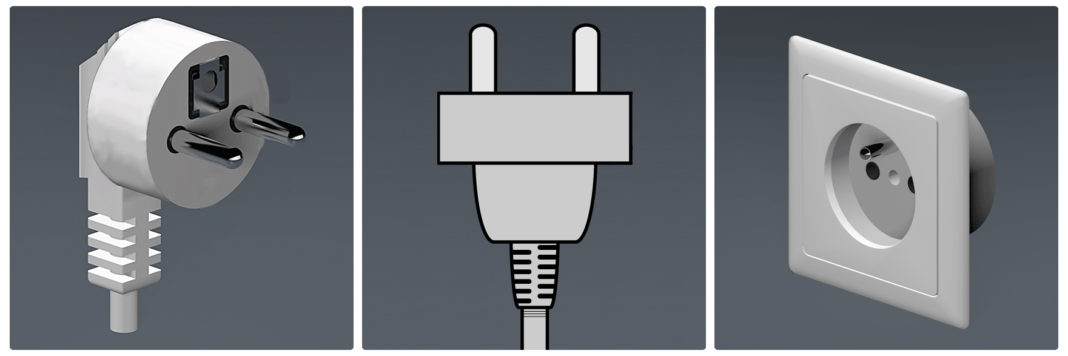
Plug Type E
Plug Type E is used in France, Denmark, and Belgium, as well as other parts of Europe and Africa. Its design is unique; there are two round prongs, along with a hole that is filled by a prong on the outlet.
As with Plug Type D, Plug Type E is less common, and not included in most standard universal plug adapters. You can find a Plug Type E/F adapter in the Ceptics 12 Piece Adapter Set.

Plug Type F
Plug Type F is used in Germany, Spain, Austria, the Netherlands, and quite a few others scattered around Europe and the Middle East. It’s essentially Type E without the matching prong in the socket. Because of this, the E/F Ceptics adapter mentioned above will work for both.
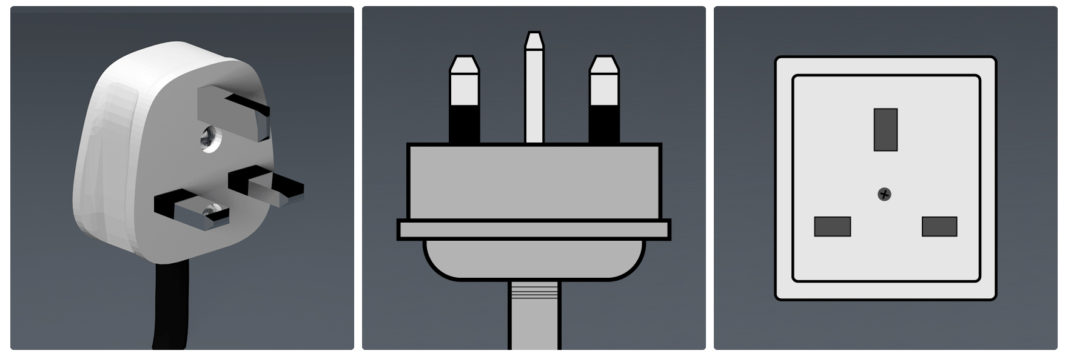
Plug Type G
Plug Type G is used in the United Kingdom, Ireland, Singapore, Hong Kong, and others in Europe and the Middle East. It has three thick, flat prongs, with the bottom two prongs parallel to each other.
Type G is commonly found in universal travel plug adapters, and all of the adapters on our list include a Type G plug adapter.
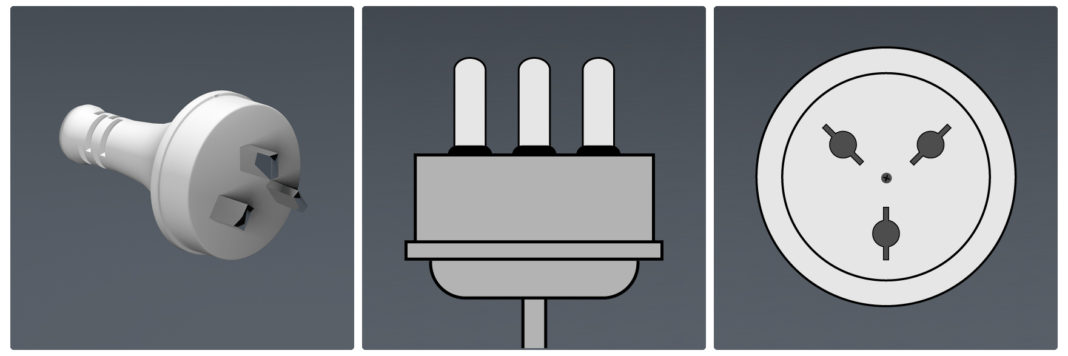
Plug Type H
Plug Type H is used only in Israel (though types C and M are also used in Israel). It features three flat prongs arranged in a triangle shape.
This is another plug type that you won’t find in universal travel plug adapters, but is included in the Ceptics 12 Piece Adapter Set.
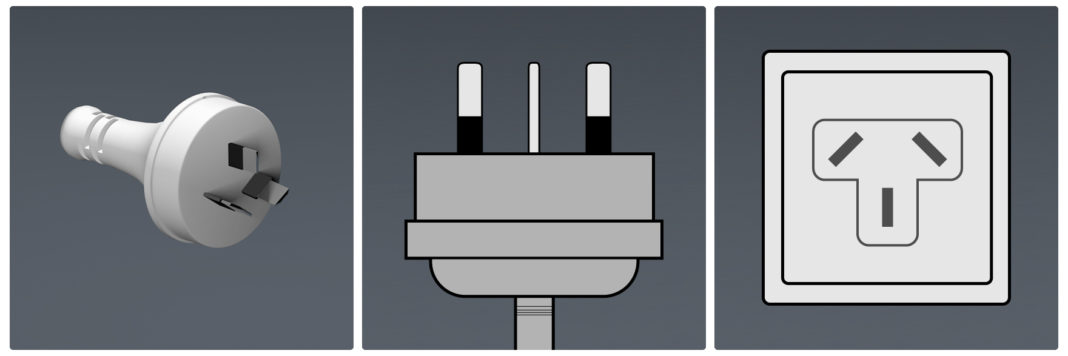
Plug Type I
Plug Type I is used by Australia, New Zealand, and a small number of others. It has three flat prongs in a configuration that looks like a sad face.
While Type I isn’t used in a large number of countries, it does come standard on universal plug adapters, including all of those on our list.

Plug Type J
Plug Type J is used in Jordan, Liechtenstein, Madagascar, the Maldives, Rwanda, and Switzerland (yep, that’s the entire list!). It has three round prongs arranged in a compressed triangle shape.
Because it’s used in so few countries, universal travel plug adapters don’t bother with Type J, but it is included in the Ceptics 12 Piece Adapter Set.
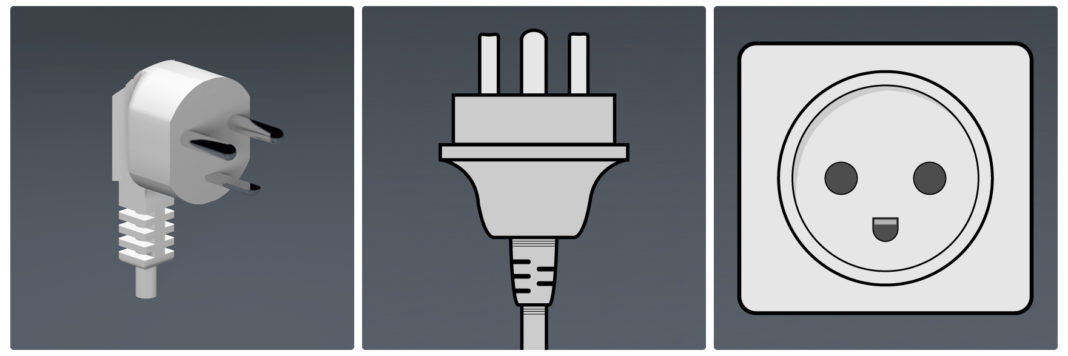
Plug Type K
Plug Type K is used in Bangladesh, Denmark, the Faroe Islands, Greenland, Guinea, Madagascar, the Maldives, Saint Vincent and the Grenadines, and Senegal (the country lists get pretty short as we reach the end). It has two round prongs, as well as a half moon grounding prong–so that the outlet looks like a happy anime face!
You won’t find Plug Type K in universal plug adapters, but it’s part of the Ceptics set mentioned above.
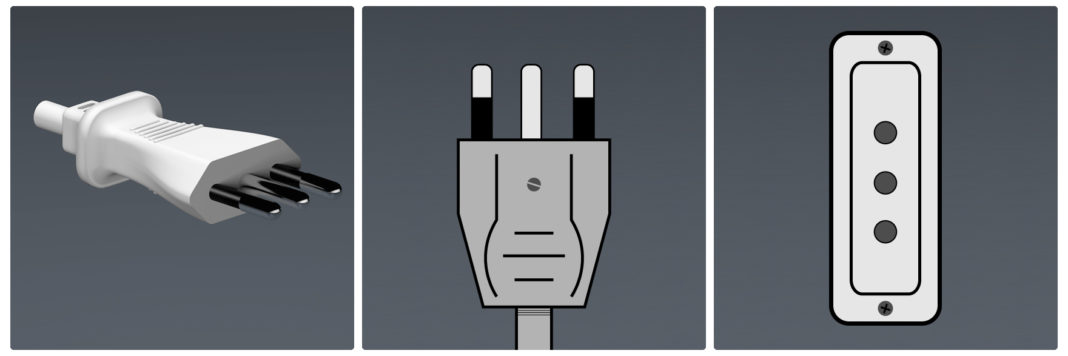
Plug Type L
Plug Type L is used in Italy (Italy also uses types C and F, and usage of the less common F and L types is why you’ll see some travelers state in reviews that their universal plug adapters didn’t work in Italy), Chile, Eritrea, Ethiopia, Libya, Maldives, San Marino, Syria, and Uruguay. It has three round prongs in a row.
Again, this isn’t common enough to be included in universal plug adapters, but the Ceptics Plug Adapter Set has what you need.

Plug Type M
Plug Type M is used in South Africa, India, Swaziland (exclusively), and a handful of other countries. It’s similar to a Type D plug, but with larger prongs.
Again, this one isn’t part of universal travel plug adapters, but you’ll find it in the Ceptics Set.
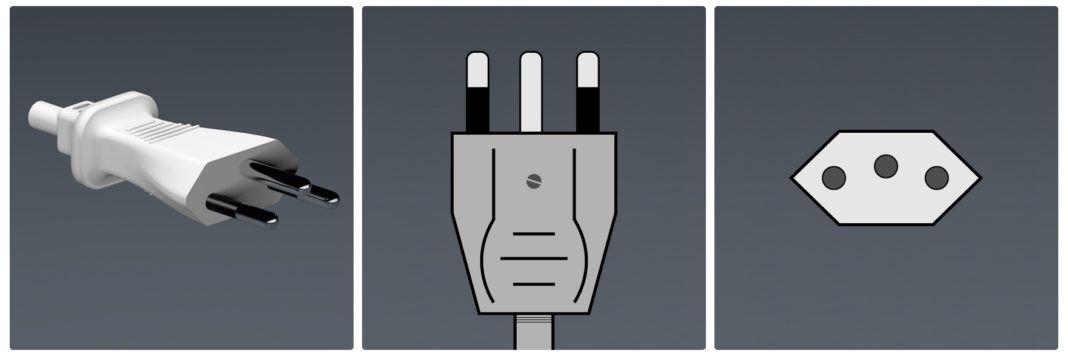
Plug Type N
The final plug type, N, is used in just Brazil and South Africa. It’s very similar in shape to the Type J, with three round prongs in a compressed triangle.
And, once again, you’ll find this in the Ceptics 12 Pieces Travel Adapter Set, but NOT in universal adapters. (We promise this isn’t an advertisement for Ceptics, there’s just quite a few less common plugs that you won’t find in universal adapters).
Sources:
- Apple: Do I Need a Power Converter for my iPhone?
- CNN: A Guide to Using Appliances Abroad
- Voltage Superstore: How to Tell if a Device is Single or Dual Voltage
- Wikipedia: Mains Electricity by Country
- World Standards: Voltage by Country
